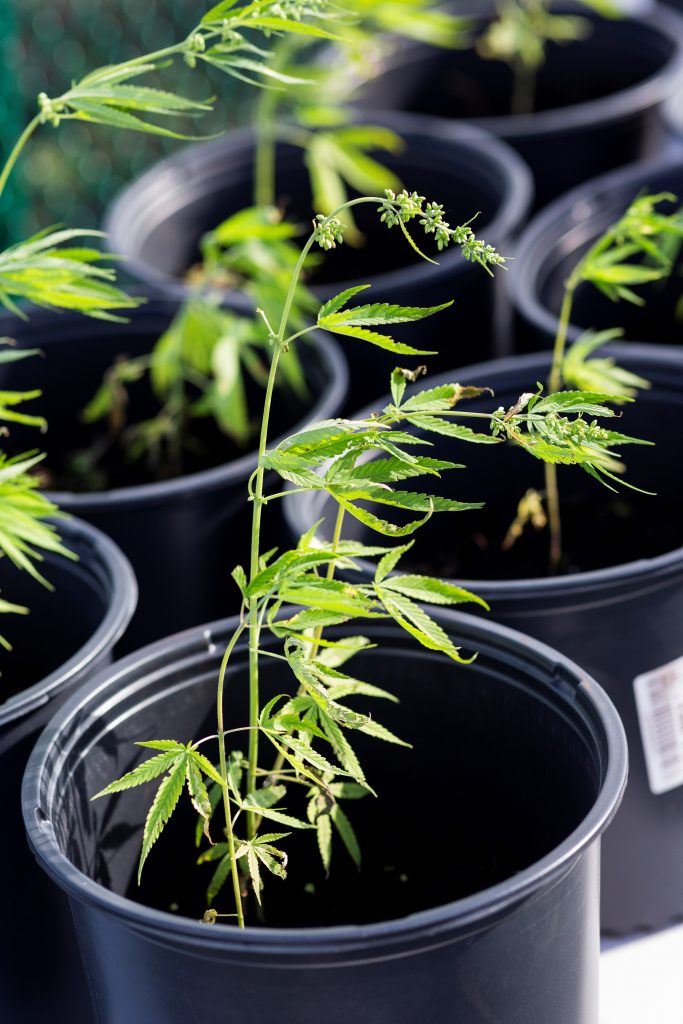By Lourdes Rodriguez

Just past the midpoint of a pilot project to study if industrial hemp grows well in Florida, University of Florida Institute of Food and Agricultural Sciences (UF/IFAS) researchers are already looking ahead to see what more they can learn.
The UF/IFAS Industrial Hemp Pilot Project team of scientists is engaged in a two-year research project started with hemp plantings in the spring of 2019. A report on the project’s findings will go to the Florida Legislature at the project’s completion but are heading out to growers in the state interested in industrial hemp.
“Our call to action is to help growers and investors make an informed choice whether to take a chance on hemp and how to grow it,” said Zachary Brym, assistant professor of agronomy at the UF/IFAS Tropical Research and Education Center (TREC) in Homestead and research lead for the pilot project. “The fact remains that Florida is an entirely new environment for industrial hemp.”
Among other research objectives, UF/IFAS scientists are working to identify varieties suitable for growing in Florida and develop management practices and cropping systems that are economically sustainable. They’re also identifying risk factors such as insects, disease and the invasive properties of hemp.
“The long-term goal of the project is to produce hemp crops in an environmentally conscious and socially responsible way while maximizing both plant health and yield,” said Brym.
PRELIMINARY FINDINGS
As the UF/IFAS Industrial Hemp Pilot Project team begins its second year of studies, researchers are warning growers of potential challenges that can affect the crop’s chances of success.
“Be cautious,” said Brym. “There remains a conspicuous lack of consistent science and support for genetics and management practices of hemp for Florida. Our work from 2019 looked at 45 or so varieties across the state. We cannot yet name any variety that did everything a farmer needs to grow a marketable product. We did see some hemp grow well in our trials, so we have something to work with.”
According to Brym, some varieties do not match the amount of daylength in the regions tested and flowered too soon. Some showed extremely high variability in growth and productivity. Many exceeded the 0.3 percent total delta-9 tetrahydrocannabinol (THC) limit at harvest.
“Each of these preliminary findings point to a risk for farmers,” said Brym. “I am also concerned about the risk to the environment.”
Reliable or consistent science-based information on fertilizer and irrigation needs for the plant do not yet exist.
“I worry that farmers will apply too much fertilizer or irrigation,” said Brym. “Our early work also begins to confirm the risk of hemp to escape from cultivation through errant seed banks and dispersal.”
Brym stressed the preliminary nature of these results and the opportunities to improve the outlook in the second year of the project. Given the need for more information and consistent results, scientists, like Brym, seek support for continued research.
“I hope that folks see the value in our preliminary findings. It’s important to report what we see from the science for better or worse,” Brym shared. “There’s a lot more work to be done.”
TRIALS AND EXPANSION
As part of the project, UF/IFAS established variety trials representing various uses (fiber, grain and CBD) from regions of origin throughout North America, Europe and Asia.
The trials were planted outdoors at three UF/IFAS research locations including the TREC in South Florida, the Agronomy Forage Research Unit in Hague and the North Florida Research and Education Center in Quincy. The first locations represented the broad range of environments, climates and farming regions of Florida. They provided the ability to assess the genetics, management practices, cropping systems and potential risks of growing in those regions, said Brym.
An invasion risk assessment at the Bivens Arm research site, located near UF’s main campus in Gainesville, has been assessing natural conditions and habitats where hemp might establish and spread outside of cultivation. The study looks at the risk of any hemp plants becoming invasive threats to Florida’s landscapes.
According to Brym, research has expanded with industrial hemp currently being grown at eight permitted UF/IFAS locations. Cultivation now includes greenhouse propagation as well as outdoor planting. Following the initial screening of varieties, additional trials were planted to improve seed emergence, pre-plant seed treatments, herbicide control and soil drainage.
What started with a core team of seven faculty members from three departments and the College of Pharmacy has expanded to 20 faculty members from a greater variety of disciplines.
Researchers from the expanded team looked into the basic physiology of hemp in a controlled environment and monitored for pests and diseases on hemp outdoor trials. Their involvement was critical when two propagation greenhouses went under quarantine for pests that appeared on transplants from outside of the state after initial delivery inspections.
“We can thank the continued industry support and investments that helped us meet our research milestones. Our research efforts to date have made great strides in making information available to this emerging industry,” said Brym. “We’re geared up to complete the pilot project in 2020 and look forward to continued engagement with the industry.”
To stay up to date on new developments, visit the UF/IFAS Industrial Hemp Pilot Project website.









